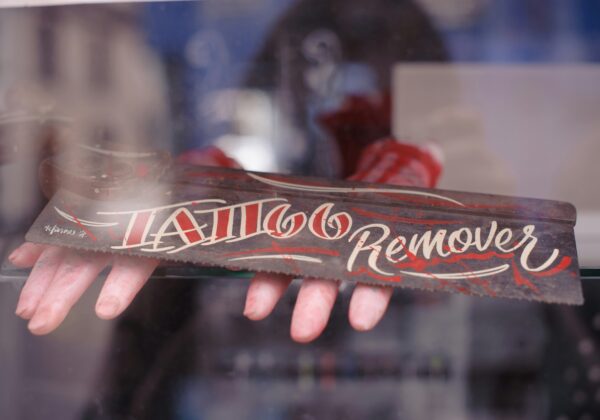Tattoos, once relegated to the fringes of society, have undergone a radical transformation in recent years. From rebellious symbols to mainstream art forms, their rise in popularity is undeniable. And technology plays a huge role in this metamorphosis.
Gone are the days of grainy flash and scratchy needles. Today’s tattoo industry is a canvas for cutting-edge advancements, blurring the lines between art, science, and even a touch of magic.
Technology is also changing the perception of tattoos. They are becoming more accepted in professional settings, and even seen as a form of self-expression and biohacking.
Let’s delve into how tech is redefining the world of ink:
Design and Placement: From Sketchpad to Skin
Remember the days of painstakingly hand-drawn stencils? Those quaint relics have been ushered into the digital age. Artists now wield the power of design software like Procreate and Photoshop, conjuring intricate masterpieces that dance across the digital canvas. This opens doors to a world of possibilities:
- Precision and Personalization: Imagine a tattoo design that seamlessly blends with your skin tone, body curves, and personal aesthetic. Digital tools allow for meticulous tweaking, ensuring every line and flourish complements the wearer’s unique canvas.
- Virtual Try-Ons: Gone are the days of blind leaps of faith. Augmented reality (AR) apps like Inkhunter and TattYou are like magic mirrors, letting you virtually test-drive designs before committing to the needle. This helps them visualize placement, scale, and color combinations, leading to fewer regrets.
Application and Precision: The Rise of the Robot Renaissance
Tattoo machines have come a long way from their buzzy, Frankensteinian ancestors.
- Tattoo machines: Modern tattoo machines are quieter, lighter, and more precise than their predecessors. They offer better control over needle depth and ink flow, leading to cleaner lines, faster healing times, and less pain.
- Robotic arms: While still in their early stages, robotic tattoo arms are the stuff of sci-fi fantasies. Imagine a tireless, tremor-free machine wielding the needle with the precision of a seasoned surgeon. The future of flawless lines is here.
Interactivity and Innovation: Inking the Unthinkable
Tattoos are no longer just permanent ink blots. They’re becoming interactive portals, canvases for innovation, and even gateways to the future:
- Biometric Tattoos: Imagine a tattoo that subtly shifts color based on your blood sugar levels or body temperature. These tattoos use special inks that react to changes in the body. Biometric tattoos are no longer a futuristic fantasy, but a reality that holds immense potential for health monitoring and even as a form of temporary biohacking.
- Soundwave Tattoos: Ever wanted to carry your favorite song or a loved one’s voice etched onto your skin? Soundwave tattoos use clever ink patterns that, when scanned by a smartphone app, come alive with the magic of music, voice message, or even your heartbeat.
3D Printing: A New Dimension in Tattoos
But the innovation doesn’t stop there. 3D printing is making its mark on the tattoo world, too:
- Biocompatible Canvases: Imagine a 3D-printed skin-like canvas that serves as a temporary platform for tattoo experimentation. This could be a game-changer for people with sensitive skin or those unsure about committing to a permanent design.
- Prosthetic Tattoos: For amputees, 3D printing offers the possibility of hyper-realistic tattoos that blend seamlessly with prosthetic limbs. This technology can help restore a sense of normalcy and confidence.
AI: The Inkwell of the Future
And let’s not forget the rising star – Artificial Intelligence. AI is poised to revolutionize the tattoo industry in several ways:
- Personalized Design Assistants: Imagine an AI tool that analyzes your body, preferences, and personality to generate unique tattoo designs that perfectly reflect your inner self. This could be a boon for those struggling to find the perfect design.
- Pain Prediction and Management: AI algorithms could analyze your skin and pain receptors to predict how much pain you’ll experience during a tattoo session. This could help develop personalized pain management strategies, making the experience more comfortable.
Technology’s impact is making tattoos more accessible, precise, and even interactive, pushing the boundaries of what we thought possible on the human canvas. But with any new frontier come questions. Safety and ethical considerations surrounding biocompatible inks and the potential for discrimination based on certain types of tattoos are crucial issues that need to be addressed.
One thing is certain: the future of tattoos is bright, bold, and brimming with innovation. So, the next time you contemplate getting inked, remember, you’re not just getting a tattoo, you’re getting a piece of the future.



